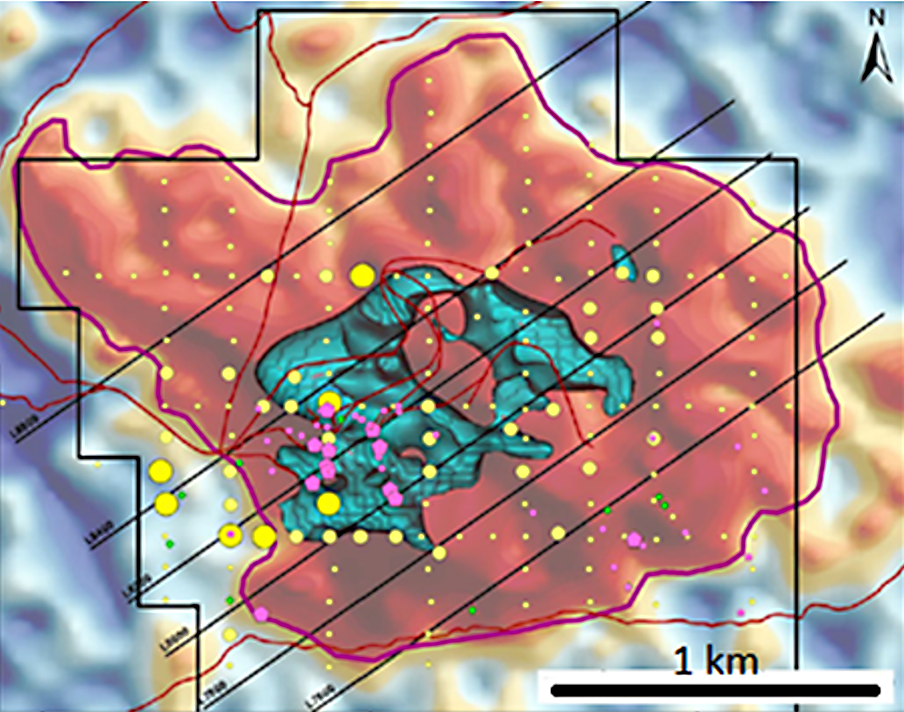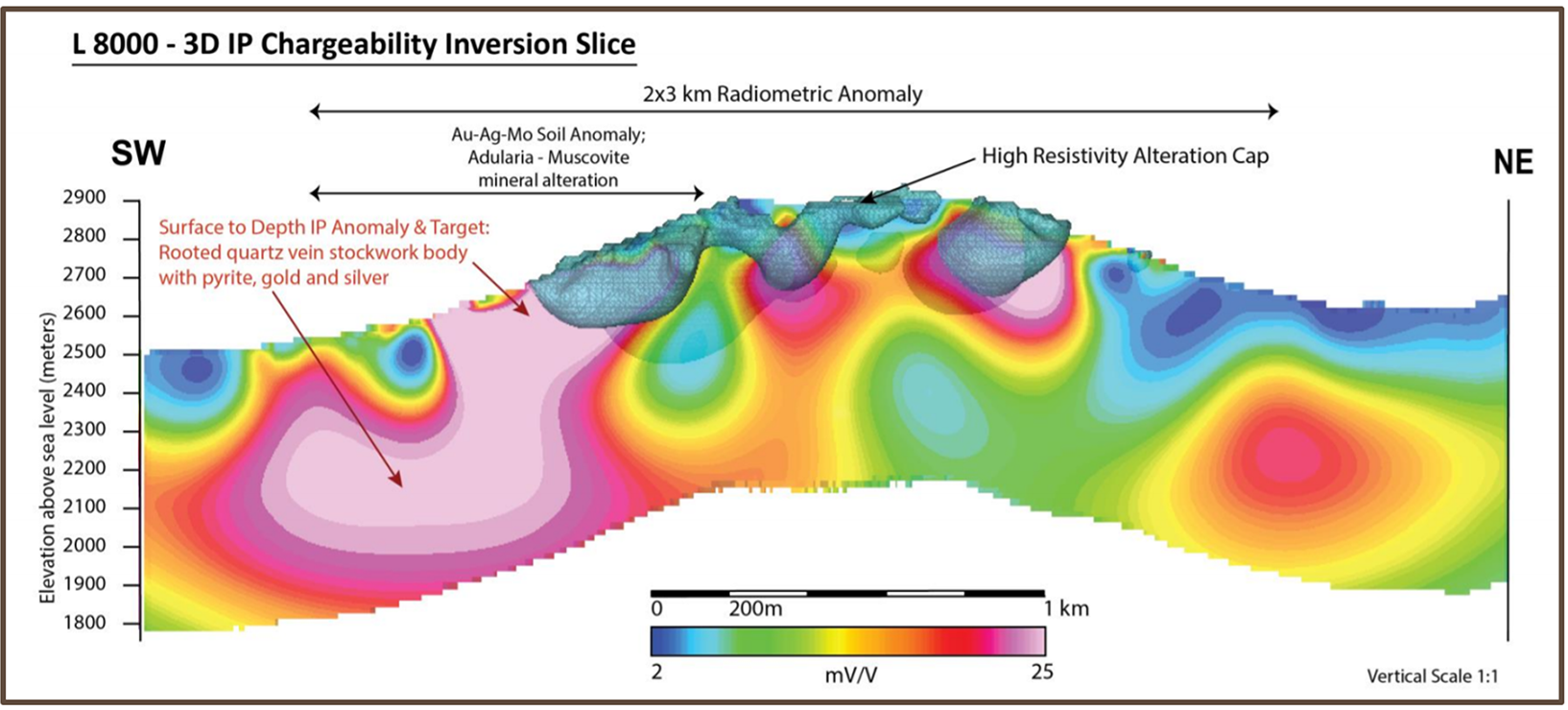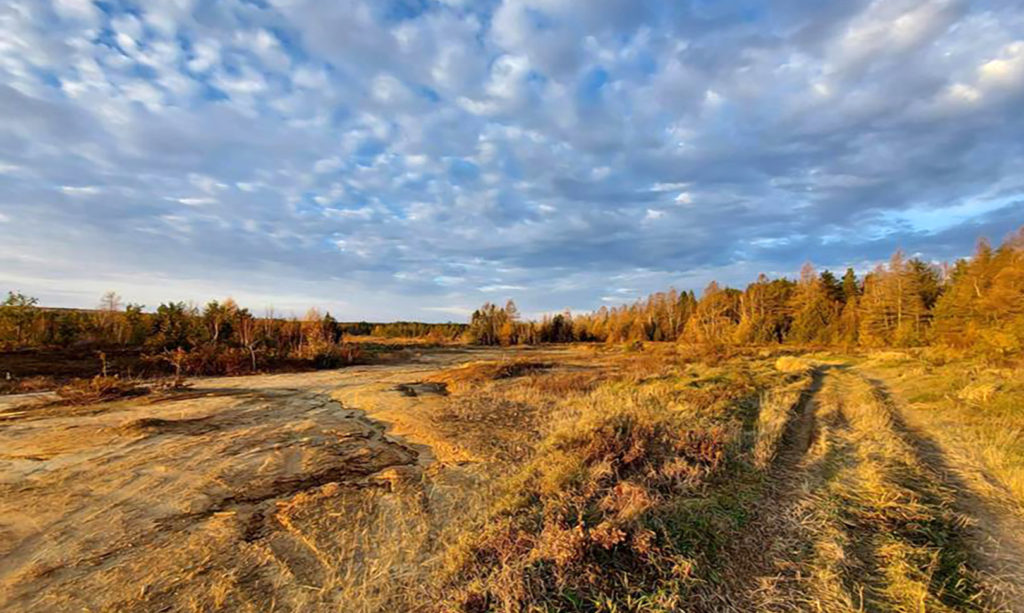
Big Ten – Amsel Project, VR Resources




SITUATION
The Big Ten caldera is a Tertiary-aged volcanic complex approximately 20 km in diameter in west-central Nevada. It occurs in an extensional rhyolite volcanic centre, which is analogous in age and setting to the Round Mountain Mine.
The Amsel project area lies within the Big Ten complex. Prior work has defined a 2 km X 3 km airborne radiometric potassium anomaly with a coincident robust Au-Ag-Sb-Mo soil anomaly. These anomalies plus a hilltop of silica-clay altered volcanic tuff with gold-bearing quartz veins indicates potential for a large epithermal gold system analogous to the Round Mountain deposit, where mineralization is found below an alteration cap in a welded tuff.
DIAS32 Solution
The DIAS32 survey was designed to identify where sulphide-bearing quartz veins are concentrated within the large alteration cap and geochemical anomaly. The 3D CVR survey using 200 m line spacing and 100 m station spacing generated more than 225,000 data records from which a final data set of 95,000 data records were used for 3D inversion modelling. The survey was designed to image to over 600 m depth.
Outcome
The 3D resistivity model identified a large near-surface high resistivity anomaly covering a 700 m X 900 m area in the southwest quadrant of the radiometric anomaly and surface alteration zone. The high resistivity zone appears to form a cap directly above an underlying IP anomaly. The high resistivity correlates with high temperature adularia and muscovite alteration in rocks, and the strongest multi-element soil geochemical anomaly.
A section along line 8000 through the 3D IP model depicts the chargeability anomaly directly below the high resistivity zone interpreted as an alteration cap. The anomaly extends from surface to a depth of at least 600 vertical meters. The anomaly occurs below the main multi-element soil geochemical anomaly and below the area where muscovite and adularia alteration minerals are identified in rock samples.
The IP anomaly from the 3D inversion model correlated directly with the overlying high resistivity alteration cap. It is also co-spatial with the silver geochemistry anomaly, and with sulfur, because the IP is expected to relate to pyrite associated with secondary hydrothermal silica. The IP anomaly correlated with the strongest sulfur anomaly and is the principal target for pyritic quartz vein stockwork with gold and silver mineralization.



